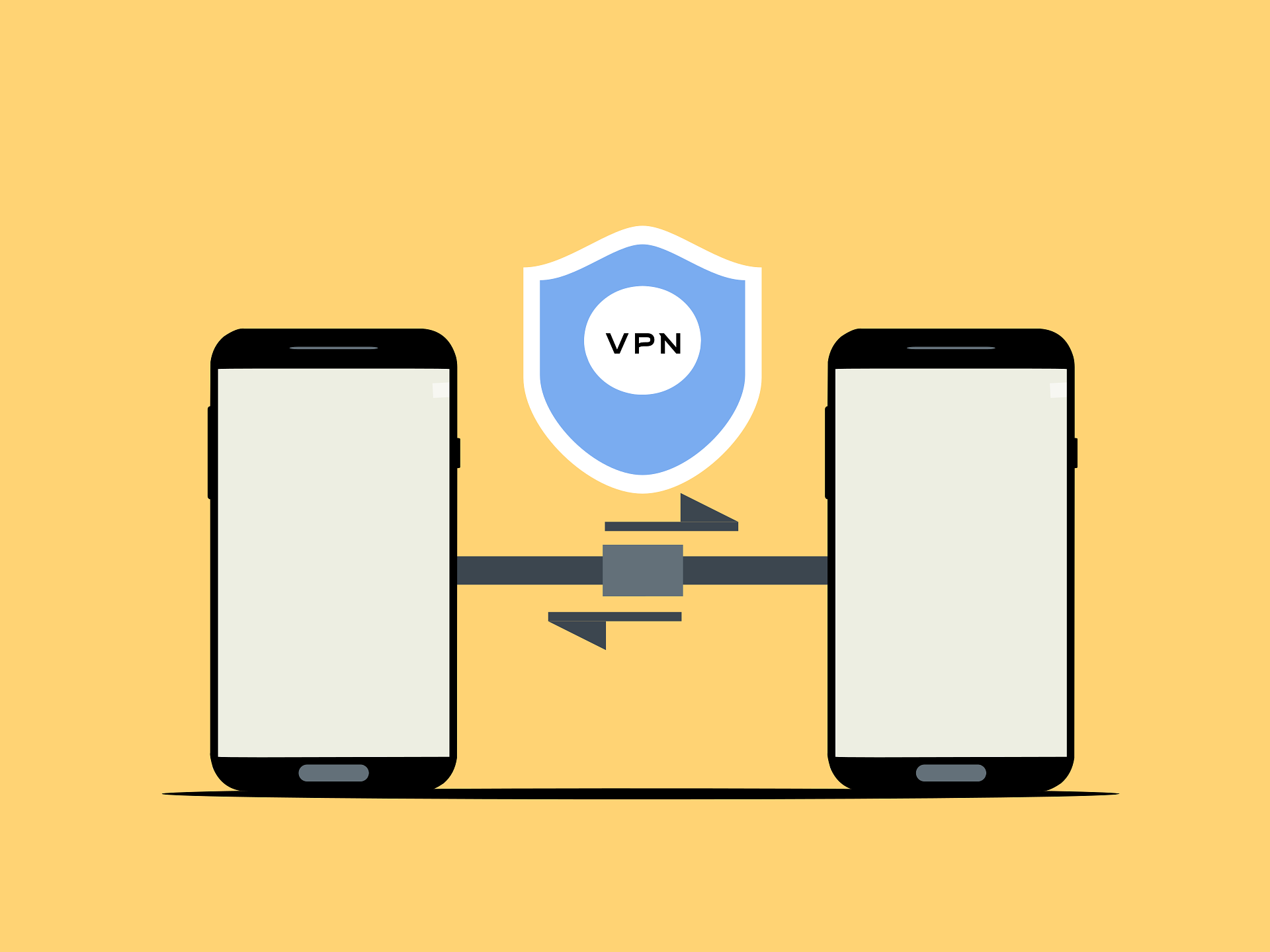In today’s world, businesses rarely operate from a single location. Headquarters, branch offices, remote data centers, and even cloud services all need to communicate securely. But connecting all these networks over the public internet introduces a massive risk—sensitive company data could be exposed.
That’s where site-to-site VPNs come in. Unlike regular VPNs that individuals use for privacy, site-to-site VPNs are designed for businesses to securely link entire networks together. They create a private, encrypted “tunnel” between two or more office locations, making them function as if they were on the same secure local network.
Let’s take a deeper look at what site-to-site VPNs are, how they work, and why companies rely on them to protect their operations.

Image Credit: Pixabay under Creative Commons
What is a Site-to-Site VPN?
A site-to-site VPN (Virtual Private Network) connects two separate private networks over the internet. Instead of encrypting just one user’s traffic, it encrypts all traffic between offices, branches, or partner networks.
Think of it like building a secure underground highway between two cities—any traffic that travels through it is shielded from prying eyes.
There are two main types of site-to-site VPNs:
-
Intranet-based VPNs
-
Connect multiple offices of the same organization.
-
Example: A company’s headquarters in New York connects to its branch office in London.
-
-
Extranet-based VPNs
-
Connect a company’s internal network to a partner, supplier, or client’s network.
-
Example: A manufacturer shares data securely with its logistics partner.
-
How Site-to-Site VPNs Work
At a technical level, site-to-site VPNs use VPN gateways (routers, firewalls, or dedicated VPN appliances) at each location. These gateways handle encryption, authentication, and secure communication.
Here’s the step-by-step process:
-
Establish a VPN tunnel: Gateways at both sites authenticate each other (using keys or certificates) and create an encrypted tunnel.
-
Encrypt traffic: Any data sent from one network is encrypted before leaving the site.
-
Transmit securely: The encrypted data travels over the public internet but remains unreadable to outsiders.
-
Decrypt at the other end: The receiving gateway decrypts the traffic and delivers it to the local network.
For employees, this process is invisible—they just access company resources like they’re in the same building.
Why Companies Use Site-to-Site VPNs
Now that we know how they work, let’s explore the real-world benefits businesses get from site-to-site VPNs.
1. Secure Office-to-Office Communication
If your company has multiple branches, you need to share files, databases, and applications between them. Without a VPN, this traffic would travel unencrypted across the internet, leaving it vulnerable to interception.
A site-to-site VPN ensures all inter-office traffic is encrypted, protecting sensitive documents, employee records, and financial information.
2. Safe Collaboration with Partners and Suppliers
Extranet VPNs allow companies to connect securely with outside partners. For example:
-
A hospital securely shares patient data with a research lab.
-
A retailer links inventory systems with suppliers.
-
A bank shares certain services with third-party payment processors.
By encrypting these connections, companies reduce the risk of data leaks while still enabling collaboration.
3. Cost Savings Compared to Private Lines
Before VPNs, many companies used leased lines (like MPLS) to connect offices. These private connections were secure but extremely expensive—especially for international branches.
Site-to-site VPNs provide similar security using the public internet, often at a fraction of the cost. This makes them ideal for small and mid-sized businesses that can’t afford leased lines.
4. Simplified Remote Work
While individual employees often use client-to-site VPNs, companies with large remote teams can benefit from combining those with site-to-site setups. For example:
-
A remote office connects via site-to-site VPN.
-
Employees in that office automatically gain secure access to corporate resources without needing individual VPN logins.
This simplifies IT management and ensures consistent protection.
5. Compliance and Data Protection
Industries like healthcare, finance, and legal services face strict data protection regulations (HIPAA, GDPR, PCI DSS, etc.). Site-to-site VPNs help organizations meet compliance by ensuring data is encrypted in transit between offices or partners.
Without proper encryption, companies risk fines, lawsuits, and reputation damage.
Common Use Cases for Site-to-Site VPNs
Let’s make this more concrete with real-world scenarios:
-
Retail chains: Securely link point-of-sale systems across multiple stores to central servers.
-
Financial institutions: Connect branch offices to head offices while complying with banking regulations.
-
Manufacturers: Share live supply chain data with distributors and logistics providers.
-
Healthcare providers: Transmit medical records securely between hospitals, clinics, and labs.
-
Global enterprises: Unite international teams into one secure network.
Potential Challenges of Site-to-Site VPNs
Of course, site-to-site VPNs aren’t perfect. Companies need to consider a few challenges:
-
Setup complexity: Unlike consumer VPNs, configuring site-to-site tunnels requires IT expertise and compatible hardware/software.
-
Maintenance: VPN gateways need regular updates, monitoring, and troubleshooting.
-
Performance issues: Since traffic is encrypted, VPNs can introduce slight latency. For bandwidth-heavy tasks like video conferencing, this may cause slowdowns.
-
Scalability: Adding many branches or partners can complicate VPN management. In such cases, companies may move toward more modern solutions like SD-WAN (Software-Defined WAN).
Site-to-Site VPNs vs. Client-to-Site VPNs
It’s easy to confuse the two, so let’s quickly clarify:
-
Site-to-Site VPNs: Connect entire networks (office to office). Best for organizations with multiple branches or partner collaborations.
-
Client-to-Site VPNs: Connect individual users (employee laptop to company network). Best for remote workers or freelancers.
In many companies, both are used together—site-to-site for branch offices and client-to-site for individual remote workers.
Future of Site-to-Site VPNs
With the rise of cloud computing, site-to-site VPNs are evolving. Companies now use them not just to connect physical offices, but also to link on-premises networks with cloud services like AWS, Azure, or Google Cloud.
This hybrid approach ensures secure data flow between local servers and cloud infrastructure, giving companies flexibility without compromising security.
Looking forward, technologies like SD-WAN and Zero Trust Network Access (ZTNA) may complement or replace some site-to-site VPN functions. But for now, site-to-site VPNs remain a proven, cost-effective, and widely trusted solution.
Final Thoughts
Site-to-site VPNs may not get as much buzz as flashy consumer VPNs, but for businesses, they’re indispensable. They allow companies to:
-
Connect multiple offices securely
-
Collaborate safely with partners
-
Reduce costs compared to leased lines
-
Ensure compliance with data regulations
-
Streamline remote office access
In short, they’re the backbone of secure business communication in a multi-location, cloud-connected world.
For companies serious about protecting their data and ensuring smooth operations across branches, a site-to-site VPN isn’t just useful—it’s essential.





